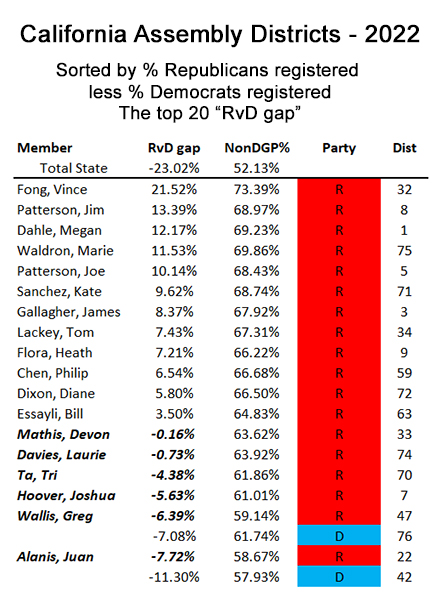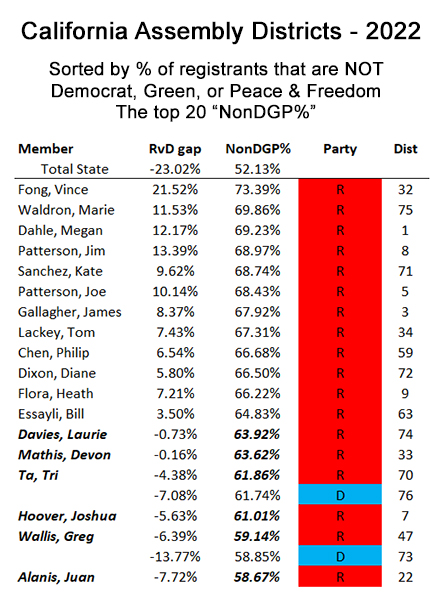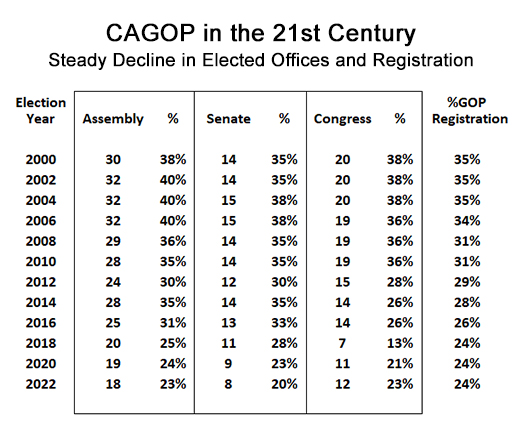The Power of Political Optimism
There is a difference between optimism and naïveté. In politics today, optimism offers conservatives an inexhaustible source of infectious power that can overcome and shatter the foundations of the establishment’s fear-based version of “populism.” Indeed it is naïve to think any other approach has a chance.
Optimism has insurrectionary power because it contradicts everything the American establishment now trains voters to accept. From uniparty conformists and their corporate, academic, and media allies who package and spread the messages, to deep state agencies and plutocrats who decide on the messages, there is a common theme: pessimism. And when pessimism impels us to believe in worst-case scenarios, panic follows close behind.
What else might explain every rote proclamation that the world is coming to an end because of the climate crisis? What else explains why millions of American children are coping with mental illness, suicidal thoughts, and hopelessness for the future? They’ve been convinced the earth is on the brink of burning up. What else accounts for educated adults utterly convinced that the planet may soon be uninhabitable? What else lends apocalyptic context to every report—a staple now part of all reporting on hurricanes, floods, or winter storms?
The currency of establishment politics in America relies on pessimism. What other word better characterizes the incessant claim that white Americans are by definition racist, that America is an inherently racist nation, and that BIPOC individuals (for the blissfully uninitiated, that’s black, indigenous, and people of color) cannot possibly hope to succeed without government edicts and entitlements to compensate for the pervasive discrimination inflicted on them by privileged white people?
The power of political optimism is that it rejects all of this. Burning fossil fuel is not going to immolate the biosphere. Forests are not disappearing. We can protect wildlife and wilderness, while also remaining realistic about what sort of a human footprint is necessary to power civilization. Diseases and pandemics will strike, and with courage we can balance the risks, protect the weak, preserve our freedom, and exercise reasonable precautions as we build herd immunity and move from pandemic to endemic. We can methodically develop vaccines and treatments, but don’t need to compel people to take them. As for racism, only vestiges remain, as Americans have built the most inviting and inclusive culture in human history.
That is optimism. It is powerful because it challenges the establishment narrative at its roots. In 21st century America, optimism is subversive. Flaunt it. Deny the doomsayers their moment. Reject the pessimistic essence of everything they’re saying. Starting there, we have a chance.
Anyone taking a hard look at what has happened to this country over the past 50 years can make the case that optimism is naïve and futile. American culture has been under unrelenting attack. The values that made America great have been undermined if not lost. The traditional family, with children raised by a father and a mother, is now denigrated as a vestige of the oppressive patriarchy. A work ethic, once considered the first prerequisite for success, is being systematically destroyed by the rhetoric of “equity.” A united nation, which for centuries had embraced the process of ethnic assimilation, in recent decades has been fractured not merely by massive new waves of immigration, but by a new message of division. For the first time in history, immigrants are not encouraged to work and assimilate, but rather to resent as racist the people who built the nation they’ve entered, and to fight to destroy it. Even the concept of what it is to be a man or a woman is questioned by the institutions we once trusted.
In recent years, unforgettable moments exemplify how far we’ve fallen as a nation. The heartbreaking images of howling mobs toppling statues of American heroes. The historic St. John’s Church came within an eyelash of turning into a pile of ashes, as rioters assaulted the White House, nearly breaking through the fence. Rampaging mobs spent the summer of 2020 spreading a defiant message as they smashed and looted downtowns across the nation: Stop resisting, elect our candidate, or we will burn this whole country to the ground. Major cities, now more than ever, are taken over by tens of thousands of predators, psychopaths, and addicts who are stealing, screaming, shitting, and shooting up in ruined public spaces that once were magnificent examples of a brilliant civilization.
These depredations to our nation and culture just scratch the surface. But the madness that inspires them is fertilized by pessimism. An optimist would never condemn the traditional family, the value of a work ethic, the promise of assimilation, or the immutability of biological sex. An optimist doesn’t believe our cities must be ceded to disorder, or that compelling addicts to sober up is an inhumane and futile act. An optimist does not think that life is fundamentally unfair, or that life on planet earth is about to end because we’ve reached a catastrophic climate “tipping point.”
This is the transgressive, revolutionary power of optimism. Not only does it unequivocally reject the fear-based premises of America’s establishment uniparty, but it can inform a comprehensive worldview that sees a bright future for America and for humanity.
In every aspect of global challenges there are optimistic scenarios. Perhaps the biggest premise of the currently prevailing political establishment in America is that globally, we are running out of resources and civilization as we know it is unsustainable. Here and abroad, this deeply pessimistic assertion is used as the moral justification for unprecedented assaults on every aspect of our lives—from freedom of movement, to the retention of middle-class wealth and survival of small businesses, all the way to basic property rights and national sovereignty. Yet this premise is a deeply flawed and hopelessly pessimistic, agenda-driven distortion of reality.
And it is easily debunked.
Choosing a Better Future
Adequate water is often cited as the looming and inevitable Malthusian check on humanity achieving universal prosperity, but technology already exists to recycle urban wastewater, desalinate seawater, engineer interbasin transfers from water-rich regions to water-poor regions, and more efficiently harvest storm runoff. Apart from mustering the political will to undertake these projects, the energy required to pump and treat water is considered by some to be the most prohibitive obstacle. But pessimism over securing adequate energy resources also rests on dubious premises.
To begin with, conventional energy is not in short supply. Proven reserves of so-called fossil fuels, at double the current rate of consumption, are sufficient to last about another 160 years. “Unproven” reserves of natural gas, oil, and coal, are estimated to be many times that. Energy abundance can also be achieved with advanced nuclear fission, or nuclear fusion, factory-produced biofuels, or through improving photovoltaic technologies, satellite solar power stations, or even direct synthesis of CO2 exhaust into liquid fuel. Energy scarcity is a political choice, not an unyielding reality.
While hard limits do exist on some of the most essential mineral resources, there are also tantalizing new workarounds and innovations to compensate for scarcity. Most metals can be recycled, and even complex systems like batteries will be cost-effectively recycled once robotic technologies dramatically lower reprocessing costs. One of the most promising alternative building materials is cross-laminated timber, a mature technology that is now available to replace concrete panels and steel trusses, and is already used as the primary structural building material in high-rise buildings around the world.
Perpetual human innovation, whether it’s cross-laminated timber, or next-generation concrete using abundant desert sand, or, for low-rise buildings, structural blocks with cores of hemp or straw, or virtually inexhaustible new minerals mined from the moon and asteroids will ensure that when the political and economic environment favors innovation, the collective lot of humanity will get better and better.
Optimism is the prerequisite for everything good—the motivation and freedom to innovate, the courage to coexist in peace, the character to work hard and accept meritocracy, the vitality to stay healthy and sober, the judgment to balance the needs of the environment with the needs of humanity, the faith to believe in a bright future, the charisma to attract others to a joyful movement, and the enduring conviction that we will overcome this rapidly descending tyranny.
Pessimism, on the other hand, catalyzes fear, panic, despair, and desperate fanaticism. Pessimism provides the fertile soil into which manipulative agendas are planted, sowing guilt, resentment, hatred, and the dark comfort of extremist solutions to manufactured problems. Pessimism and the products of pessimism are the body on which evil festers and grows.
Practicing optimism, and professing optimistic perspectives on political challenges is the furthest thing from being naïve. Optimism is a weapon, a talisman, capable of recruiting and realigning the American people to obliterate every diabolical schema and evil scheme that currently threatens their nation. Make it the foundation of your politics, and wield it with recognition of its power. And enjoy every minute.
This article originally appeared on the website American Greatness.

Edward Ring is a contributing editor and senior fellow with the California Policy Center, which he co-founded in 2013 and served as its first president. He is also a senior fellow with the Center for American Greatness, and a regular contributor to the California Globe. His work has appeared in the Los Angeles Times, the Wall Street Journal, the Economist, Forbes, and other media outlets.
To help support more content and policy analysis like this, please click here.



